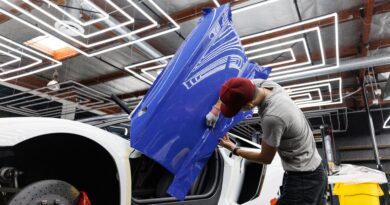How Shipping Containers Are Made?
A shipping container is a hefty vessel that is fitted to endure warehousing, freight as well as being controlled. These vessels vary from sizeable recyclable steel containers utilized for transporting products while on different kinds of vehicles, to the ridged ones currently found all over. However, in recent years people have become more creative with how they utilise steel containers, with businesses using them as temporary offices and individuals even using them as homes.
Before narrowing down to the procedure involved in making shipping containers, we will begin from the basics. The fundamentals entail understanding what a shipping container is, the various types available and what these shipping containers are used for.
Various Kinds of Containers
- General-purpose – Entirely confined and therefore safeguarded from external factors. They are common, especially for consignment transportation.
- High-cube – They resemble the general-purpose ones but are bigger and higher by about one foot.
- Open top – The roof is convertible and employed for loading large and towering items.
- Swap body – They are substitutable and utilized for use on railways and roads. Are also detachable and restricted for use on land alone.
- Iso reefer – Most suitable to transport perishables. The temperature is controlled using exterior energy.
- Insulated – The temperature within is controlled, to either maintain the within very hot or very cold.
- Double door – On both ends, there are doors and look like a tunnel.
- Open-side – Structure is similar to the general-purpose ones, only that one side opens up fully.
A vessel from any of the above categories can be employed for multiple purposes. In the past, it would only be utilized as a storage container or to ship. However, nowadays people have become so innovative that containers are now being utilized for many more roles
What Are the Uses of Shipping Containers Aside from Transportation of Cargo?
Apart from serving as a storage container, shipping containers are now being architecturally designed and modified to serve as:
- Schools
- Hotels and restaurants
- Residential houses
- Hostels
- Offices
- Toilets
- Shops or markets
- Indoor gardens
If you’re looking to purchase or rent a shipping container for business or personal use, check out Insite Portable Accommodation. They stock a wide range of containers in different sizes and even provide delivery, making them the perfect UK supplier. This is enough background information regarding shipping containers and we can now go ahead and expound on how they are made.
A Step-By-Step Guide on How Shipping Containers Are Made
Below is a break-down of eight steps that are involved during the construction of shipping containers:
Assembling the wall panels
These panels are sizeable panes that are made of steel. The steel panes should be cut according to the dimensions required, in terms of length and width. To make these sheets tough and solid, they are corrugated, such that their surface appears to be ridged. After the corrugation process, these sheets are now attached through welding for the creation of a complete wall panel.
Fabrication of the floor framework
Completion of the wall panel is followed by setting up the frame of the floor. These frames are principally constituted by I beams. In simple terms, I-beams are two horizontal panes, attached using one vertical element.
Once these beams are laid out in the correct measurements, they are sealed together, leading to the creation of a foundation that resembles a slab. A grinder is the made use of, to sand out the surface and ensure that it is smooth, even, and neat.
Making doors and working on the corner regions
Corrugated steel is used when making doors. The steel is cut in the required dimensions and then enclosed in a steel tubing that has a square shape. These doors are then smoothened by sanding. On the other hand, corner posts are sealed together with the I-beams, after which the doors are fixed inside these I-beams.
Finalizing on the box
The door frames are carefully positioned as needed and fixed above the floor layout. Welding is required, to attach the door frame to the floor. The same thing is done with the wall panels. They are also sealed to the floor and doors. Since the bottom and sides are now complete, the top bit of the container is gently dropped and welded, attaching it to the other parts of the container.
Painting
This is done in two steps. The first one entails showering an undercoat, on the surface of the container. This is known as priming and it helps to ensure that the topcoat sticks firmly to the surface and also provides extra protection for the container’s surface.
The undercoat is then given enough time to fully dry up before additional layers of paint are sprayed all over the surface. These additional layers safeguard the container’s surface against damage by harsh external environmental factors.
Completing the floor work
In most cases, wooden flooring is the one that is attached to the frame of the floor. Varnish is applied all over the wooden flooring panels, as a preservative overlay. The varnish should dry up before these panels are attached to the floor that is made of steel.
Naming and embellishing
The vessel is now complete and ready for labeling as well as any kind of decoration desired. Other details that give comprehensive details about the container, can also be added.
Waterproofing
A waterproof coating is sprayed across the entire bottom surface of the container. Once the coating is dry, the container is immersed in water and checked to confirm whether there is any leakage or fault. The absence of flaws or seepage is an indication that the container is ready for use.
The process of assembling a container up to completion involves several steps as indicated above. It is interesting that we now understand how the containers that are now vastly used, are made.



